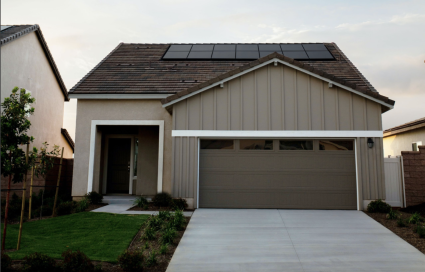Several housing finance reform models, including the Treasury and HUD plans recently issued at the direction of the White House, support an expanded role for Ginnie Mae in the future housing finance system. Understanding Ginnie Mae’s functions and the structural challenges it faces in the current housing finance system is an essential first step in analyzing these proposals effectively.
This paper—mainly intended to inform policy makers and staff—provides operational insight into Ginnie Mae’s two primary functions: guaranteeing mortgage-backed securities (MBS) issued within the government mortgage channel, and operating a common securitization platform through which all such MBS are issued. The author has a unique perspective on Ginnie Mae, having served the longest term of any Ginnie Mae president.
By performing its critical role over the last 50 years, Ginnie Mae has successfully enabled MBS issuers to leverage the government’s guarantee and transfer interest rate risk to the capital markets and credit losses to insurers. For Ginnie Mae to continue to operate at maximum effectiveness, and, if called upon, assume an expanded role in the housing finance landscape, the agency and the government must address key challenges to Ginnie Mae’s evolution.
Related Content
-

The Milken Institute’s Community Explorer Tool Offers New, In-Depth County-Level Demographic, Socio-Economic Data to Help Inform Policy Development
WASHINGTON, DC (October 18, 2022) — The Milken Institute announced the release of its Community Explorer, an interactive tool that drills down into various demographic and socio-economic data to help inform policy discussions around housing...Read ArticleImage
Chad Clinton
Director, Media RelationsChad Clinton is the director of media relations for the Milken Institute. Hired to this role in August 2021, Clinton develops and executes strategies to amplify the Institute’s core messages by generating coverage of its pillar workstreams, experts, and events. -
The Supply Side: Defining a Pathway for Increasing California’s Housing Development Opportunities
Californians face an unprecedented challenge finding affordable housing. Over the past 30 years, the precipitous rise in housing prices, development constraints, and stagnant growth in real income have cultivated a housing ecosystem that...Read Report11 11Carlo De La Cruz and Matt Horton -

Milken Institute Advisory Council Roundtable on Preventative Health
DOWNLOAD REPORT Each year, the United Kingdom National Health Service (NHS) treats more patients for preventable diseases, yet funding remains largely focused on hospital care rather than prevention. Without new investment in preventative...Read Report 11
11

 11
11
-
A Blueprint for Administrative Reform of the Housing Finance System
This paper sets out proposed administrative actions to reform the housing finance system in the absence of legislation. The goal is to build upon the progress that has been made toward a safer and more effective housing finance system with...Read Report11 11 11 11Eric Kaplan, Michael Stegman, Phillip Swagel, and Theodore Tozer -
For Whom Are We Building the American Dream? The Role of Subsidies in the Economics of Housing
Leaders from across the political spectrum articulate the virtues of homeownership. As expressed in the above quotations, both Republican and Democratic presidents emphasize that homeownership is part of the American dream. Besides the...Read Report -
The Role of a Duty to Serve in the Secondary Mortgage Market
A much-debated concept to support affordable housing is that of a duty to serve (DTS) policy, which would impose an obligation on the secondary mortgage market institutions of Fannie Mae and Freddie Mac or their successors to ensure that...Read Report -
A Conversation About Housing Finance Reform
Milken Institute and Urban Institute experts discuss a draft bill under discussion as of March 2018 in the Senate Banking Committee to reform the housing finance system. Given the breadth and the complexity of the bill, which would...Read Report -

Accelerating a Green Recovery for Los Angeles: Pathways for Investing in Building Retrofits and Green Affordable Housing Development
Please read this summary of the virtual roundtable the Institute hosted with Los Angeles Mayor Eric Garcetti that explored how to facilitate a "green recovery" during the COVID-19 induced economic downturn while also advancing the goals...Read Report -
Toward a New Secondary Mortgage Market
There is a simple and sensible way to finally achieve comprehensive housing finance reform in the U.S.. The approach proposed in this paper is to amend the charters of Ginnie Mae, Fannie Mae and Freddie Mac, and the Federal Housing Finance...Read Report11 11 11Eric Kaplan, Ed DeMarco, and Michael Bright -

Financing Urban Resiliency: Innovative Approaches to Deliver Affordable Housing in Chicago
In many US cities, concentrated poverty and chronic disinvestment have resulted in wide social, economic, and geographic disparities. More recently, these same city centers are being revitalized – and as rents outpace wage growth, quality...Read Report -
Housing Finance Reform: Step-by-Step
Remarks as prepared for delivery to the Goldman Sachs Housing Finance ConferenceRead Report -

Financing Urban Resiliency Investing in Complete Communities in the London City Region
By 2050, 68 percent of the world’s population will be living in cities, more than double the percentage reported in 1950. Urban growth has risen sharply since 2000, and many cities, London among them, are under extreme pressure to improve...Read Report 11
11
Caitlin MacLean, Yvette Edidin, and Maressa Brennan
11
11
Caitlin MacLean, Yvette Edidin, and Maressa Brennan
